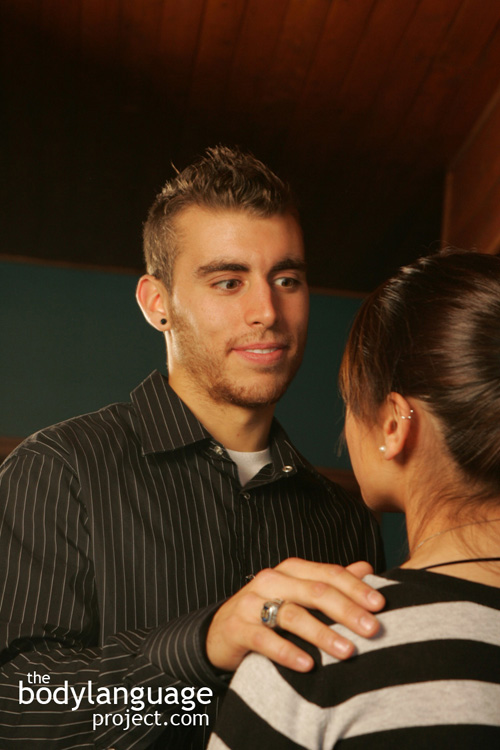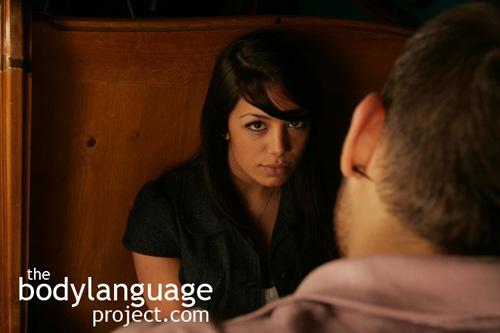
“Talking out of the side of the mouth” came about because we feel that liars don’t speak to us straight; in plain terms.
One of the most reported cues of deception includes fear and nervousness. These include higher pitch, faster and louder speech, speech errors or stuttering and indirect speech or talking out of ‘the side of the mouth’ or in worse cases, the liar might even sound unpleasant. We might also see blushing of the face, neck or ears, an increase in blink rate, fidgeting, dilation of the pupils or sweating. In theory, the greater the apprehension of getting caught or the greater the stakes, the more evident these fear cues should be. As an increase in the possibility of punishment or with an increase in the severity of punishment we should also find an increase in nervous body language. The studies tell us that people who lie about something they’ve done wrong, termed a ‘transgression’, the more likely they were to show more deceptive cues presumably because they felt guilt more strongly.
We should also be cognoscente about the motivation of the liar. If they aren’t particularly vested in the lie, they might not show nervousness at all. Someone presenting a ‘white lie’ about who they were with the night previous, or their preference for chocolate versus vanilla ice cream, should be expected to show minimal nervousness. More experienced liars show very little nervousness, because, not only are they practiced at lying, they rarely get caught, so have little to worry about effectively destroying the hypothesis that nervousness specifically increases because of lying. Conversely, poor, but frequent liars, get caught so often that the consequences of their lies fail to bother them, so they also lack nervousness. We should also predict that lies told to close friends or family whom the liar cares for, should make them more susceptible to nervous body language. Here we might in fact see lower pitch, softer and slower speech and a downward gaze as they battle their consciousness. The stick in the spokes of this theory though is that sometimes telling the truth can causes guilt just the same as telling a lie, especially when it is known that the truth might hurt someone. Other times, telling the truth causes even more distress because of the shame of revealing possible shortcomings or mistakes to others. Thus, it’s a pretty safe statement to say that liars don’t always feel guilty about their lies and truth tellers don’t always feel good about their honesty. In fact, many liars justify their lies to prevent distress in other people!
Being unable or unwilling to embrace their lies is what makes lie tellers appear less truthful and convincing. So by this theory we should expect a liar to face more negative emotions when lying which truth tellers don’t face which in turn leads to at least faint feelings of discomfort which then leaks out through the body. However, again we find data to the contrary. It has been noted by researchers that liar can have less vested in their claims primarily because they haven’t actually occurred. This is counter what was presented thus far because instead of appearing more emotional, they may in fact appear less emotional. Lest we forget too that liars can present fearful emotions when they lie due to the chances of getting caught! If you haven’t gotten the point by now, you are starting to. The point is that emotions are intertwined with the fear of getting caught, anguish of lying and telling the truth and a myriad of other factors directly and indirectly related to lying.
As we know, when truth tellers speak, they are backed with an accumulation of knowledge, experience and wisdom from an event, whereas a liar is only acting out of his own imagination. This can provide clues to his deception. Therefore, the liar might offer fewer details, present their story with less emotional investment, provide less evidence to stake their claims, act less compellingly, appear less forthcoming, less pleasant and more tense. It is also important to note the motivation or context of the lie as well, as this will provide us with clues to watch for, be it nervousness, fear of getting caught and the guilt or the shame of either lying or not lying as the case may be.


